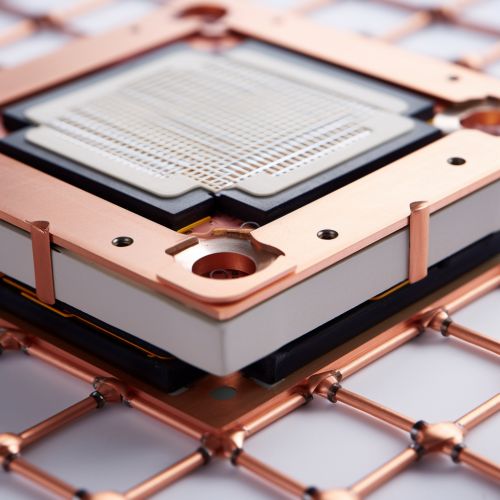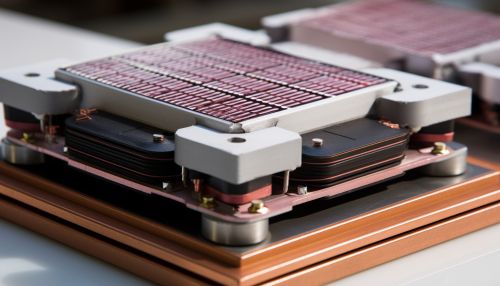Thermoelectric Cooling
Introduction
Thermoelectric cooling is a solid-state refrigeration process that utilizes the Peltier effect to create a heat flux between the junctions of two different types of materials. Unlike traditional refrigeration systems, which rely on refrigerants and compressors, thermoelectric cooling systems are compact, have no moving parts, and can precisely control temperature even at a small scale.


Principles of Operation
The operation of a thermoelectric cooler is based on the Peltier effect, which is the presence of heating or cooling at an electrified junction of two different conductors. When a DC electric current is passed through a circuit composed of different conductive materials, heat is absorbed at one junction (the "cold" junction) and expelled at the other junction (the "hot" junction). This heat transfer is due to the movement of charge carriers (electrons or holes) in the material, which carry heat with them as they move from the cold to the hot junction.
Components and Design
A typical thermoelectric cooler consists of two ceramic plates, which serve as the cold and hot sides of the cooler, and a series of P- and N-type semiconductors sandwiched between the plates. The semiconductors are doped to create a surplus (N-type) or shortage (P-type) of electrons. The semiconductors are arranged in couples with a P- and an N-type connected in series electrically, but in parallel thermally. This arrangement allows for the efficient transfer of heat from one side of the device to the other.
Applications
Thermoelectric cooling has a wide range of applications, from cooling electronic components and photonic devices to refrigerating food and beverages in portable coolers. In addition, thermoelectric coolers are used in scientific and industrial applications where precise temperature control is required. For example, they are used in PCR machines in molecular biology to rapidly heat and cool samples, and in CCD cameras in astronomy to reduce thermal noise.
Advantages and Disadvantages
Thermoelectric coolers have several advantages over traditional refrigeration systems. They are compact and lightweight, have no moving parts, do not require refrigerants, and can provide precise temperature control. However, they also have some disadvantages. They are less efficient than traditional refrigeration systems, especially at larger scales, and they require a heat sink to dissipate the heat generated at the hot junction.
Future Developments
Research is ongoing to improve the efficiency of thermoelectric coolers and expand their applications. This includes the development of new materials with higher thermoelectric efficiency, and the design of systems that can recover and utilize the waste heat generated by the coolers.
